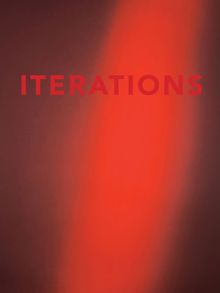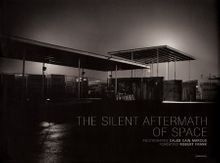PHOTOGRAPHY MONOGRAPHS
|
|
in stock $30.00 Free Shipping UPS GROUND IN THE CONTINENTAL U.S. |
 Caleb Cain Marcus: Iterations
Caleb Cain Marcus: Iterations
Published by Damiani.
Text by Richard Nonas.
In 2018, New York–based photographer Caleb Cain Marcus (born 1978) completed a series of 20 large-scale photographs, each depicting a shifting beam of light. This monograph traces Marcus’ exploration of color, shape and spatiality in these red monochrome prints mixing digital and analog.
PUBLISHER
Damiani
BOOK FORMAT
Hardcover, 9.5 x 12.5 in. / 56 pgs / 25 color.
PUBLISHING STATUS
Pub Date 9/17/2019
Active
DISTRIBUTION
D.A.P. Exclusive
Catalog: FALL 2019 p. 203
PRODUCT DETAILS
ISBN 9788862086592 FLAT40
List Price: $40.00 CAD $55.00
AVAILABILITY
In stock
in stock $40.00 Free Shipping UPS GROUND IN THE CONTINENTAL U.S. |
 Caleb Cain Marcus: A Brief Movement after Death
Caleb Cain Marcus: A Brief Movement after Death
Published by Damiani.
New York–based photographer Caleb Cain Marcus (born 1978) contemplates life and death in his photographs of ocean and sky on the coasts of New York and California. The images presented in this book demonstrate a new approach, juxtaposing digital and hand-applied mediums like grease pencil.
PUBLISHER
Damiani
BOOK FORMAT
Paperback, 7 x 10 in. / 48 pgs / 20 color.
PUBLISHING STATUS
Pub Date 9/25/2018
Active
DISTRIBUTION
D.A.P. Exclusive
Catalog: FALL 2018 p. 204
PRODUCT DETAILS
ISBN 9788862086042 FLAT40
List Price: $30.00 CAD $40.00
AVAILABILITY
In stock
in stock $30.00 Free Shipping UPS GROUND IN THE CONTINENTAL U.S. |
 Caleb Cain Marcus: Goddess
Caleb Cain Marcus: Goddess
Published by Damiani.
Text by Richard Ford.
PUBLISHER
Damiani
BOOK FORMAT
Hardcover, 9.75 x 11.5 in. / 108 pgs / 48 color.
PUBLISHING STATUS
Pub Date 9/29/2015
Active
DISTRIBUTION
D.A.P. Exclusive
Catalog: FALL 2015 p. 187
PRODUCT DETAILS
ISBN 9788862084185 FLAT40
List Price: $50.00 CAD $67.50
AVAILABILITY
In stock
in stock $50.00 Free Shipping UPS GROUND IN THE CONTINENTAL U.S. |
 Caleb Cain Marcus: A Portrait of Ice
Caleb Cain Marcus: A Portrait of Ice
Published by Damiani.
Text by Marvin Heiferman, Robin Bell, Caleb Cain Marcus.
PUBLISHER
Damiani
BOOK FORMAT
Paperback, 12 x 14.5 in. / 72 pgs / illustrated throughout.
PUBLISHING STATUS
Pub Date 9/30/2012
Out of print
DISTRIBUTION
D.A.P. Exclusive
Catalog: FALL 2012 p. 184
PRODUCT DETAILS
ISBN 9788862082341 TRADE
List Price: $45.00 CAD $55.00
AVAILABILITY
Not available
STATUS: Out of print | 00/00/00 For assistance locating a copy, please see our list of recommended out of print specialists |
 Caleb Cain Marcus: The Silent Aftermath of Space
Caleb Cain Marcus: The Silent Aftermath of Space
Published by Damiani.
Foreword by Robert Frank.
PUBLISHER
Damiani
BOOK FORMAT
Hardcover, 16.25 x 13 in. / 48 pgs / 20 quadratone.
PUBLISHING STATUS
Pub Date 3/31/2010
Out of print
DISTRIBUTION
D.A.P. Exclusive
Catalog: SPRING 2010 p. 98
PRODUCT DETAILS
ISBN 9788862081122 TRADE
List Price: $50.00 CAD $60.00
AVAILABILITY
Not available
STATUS: Out of print | 00/00/00 For assistance locating a copy, please see our list of recommended out of print specialists |

